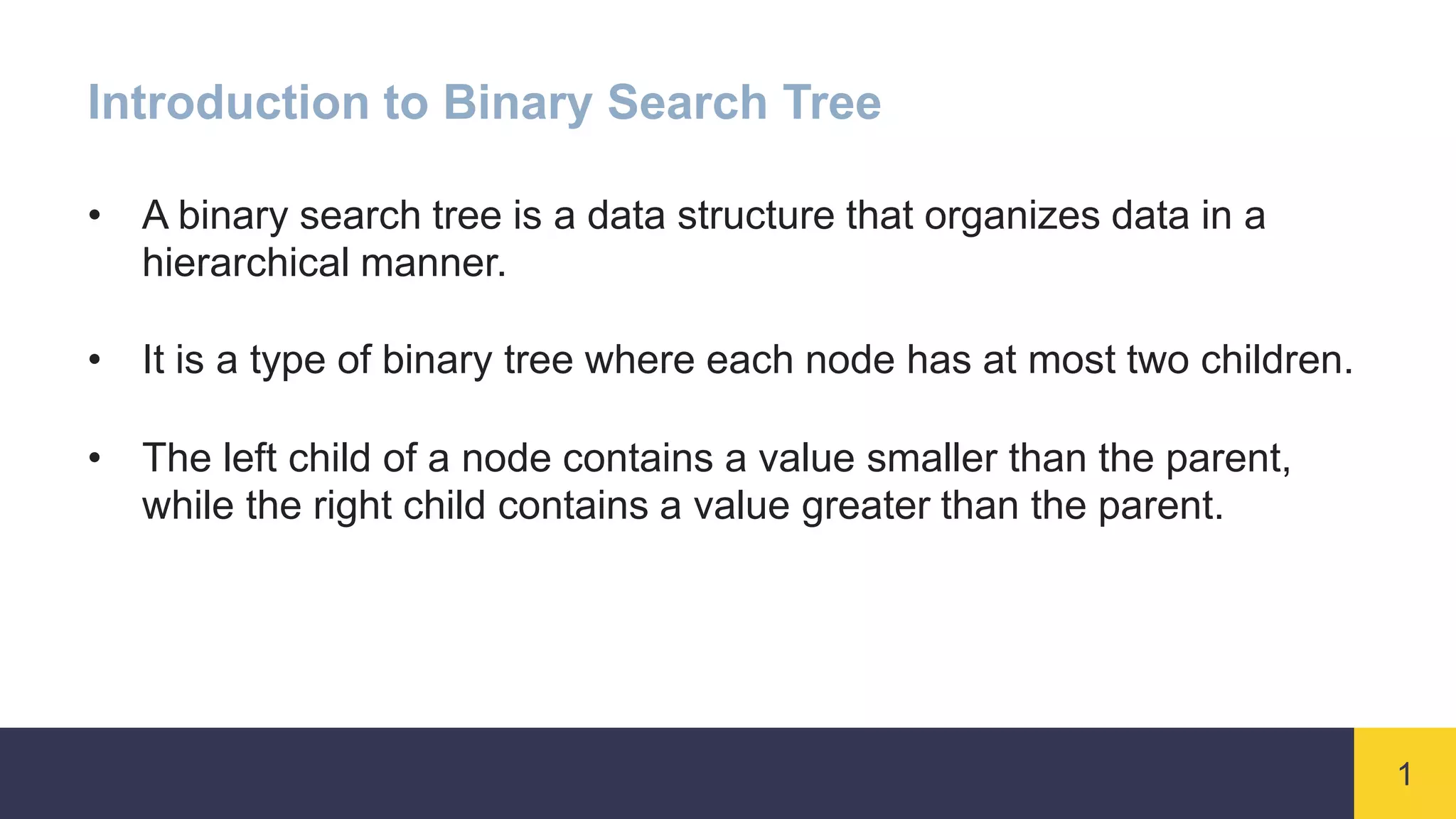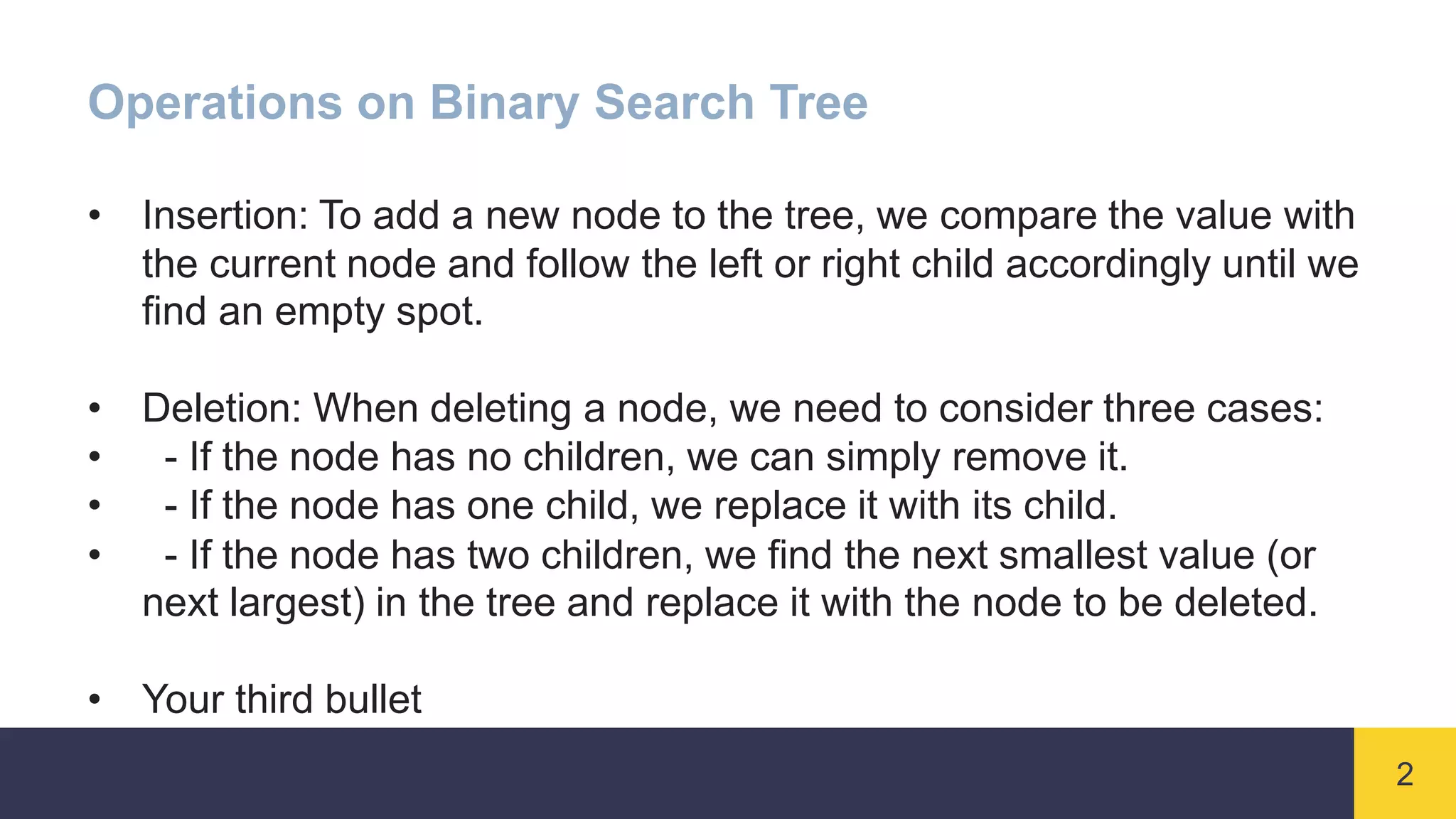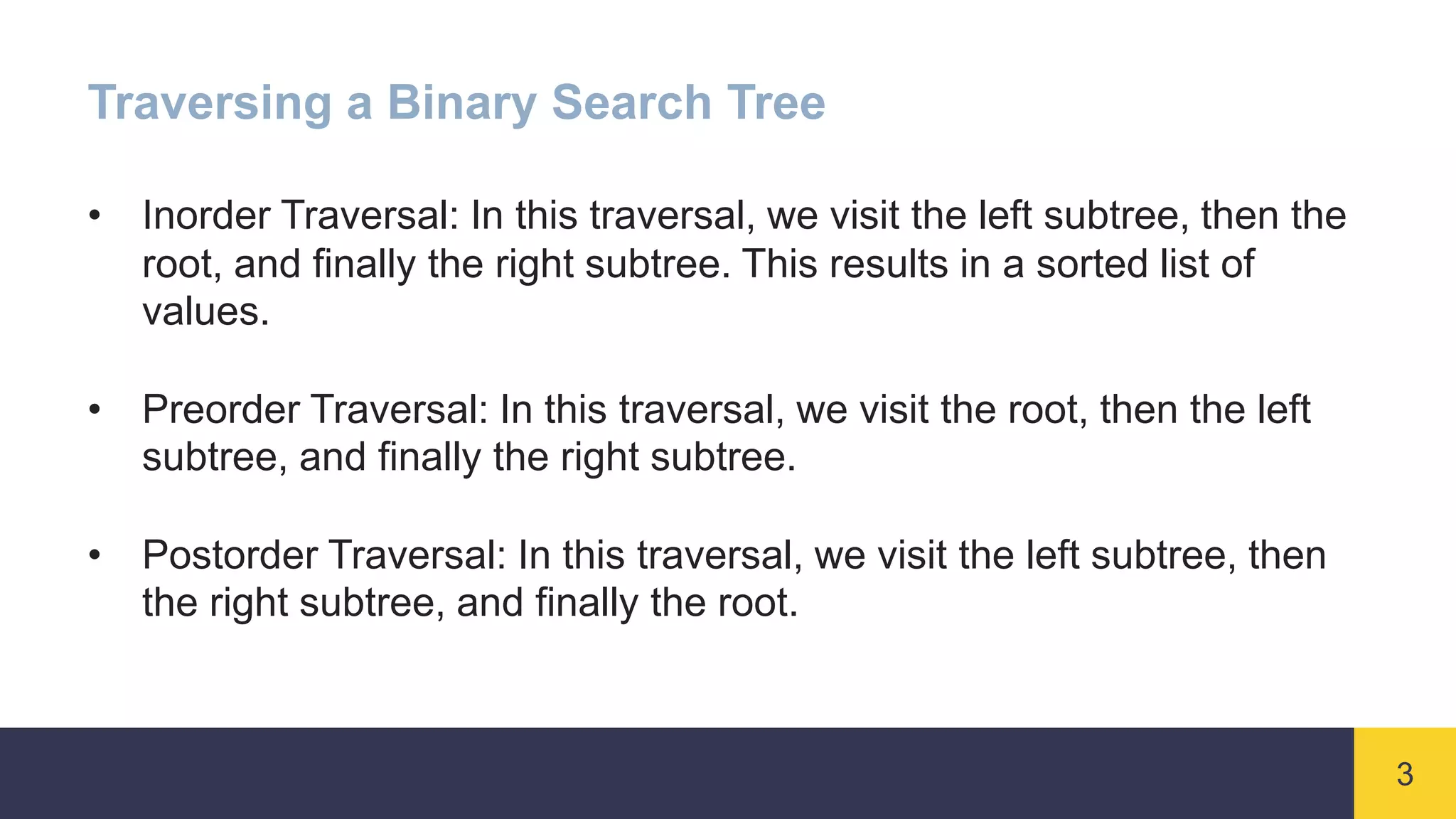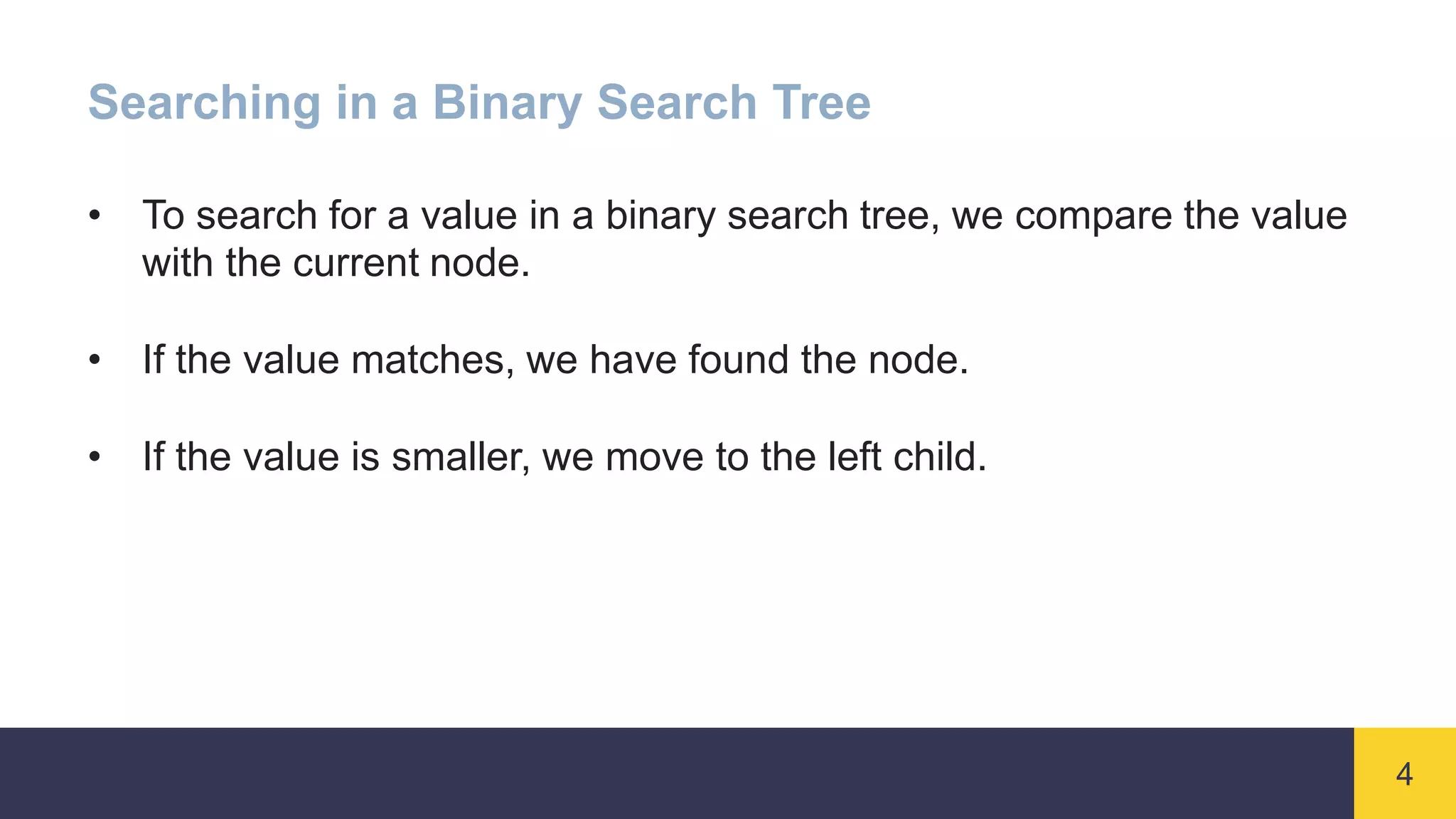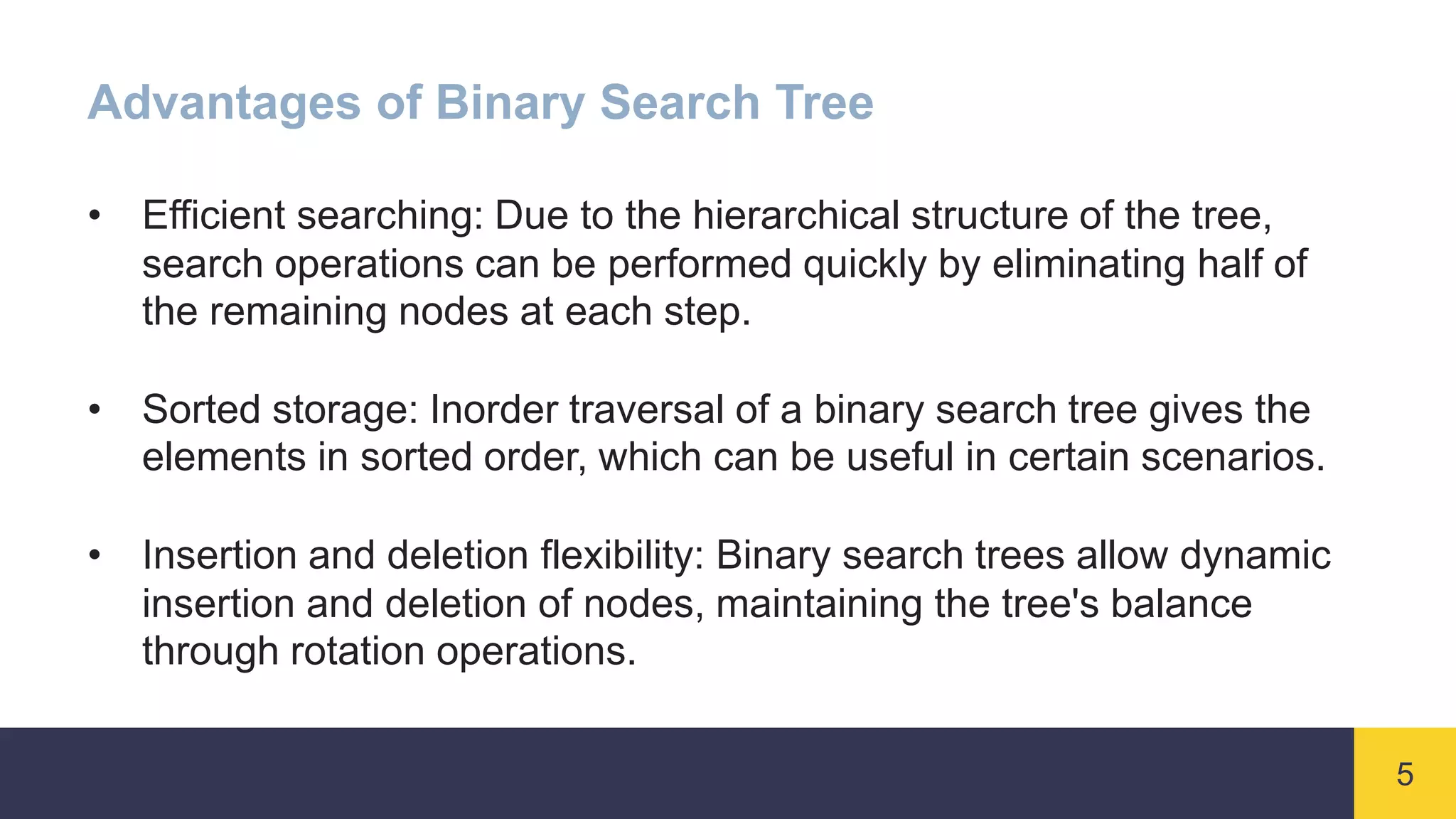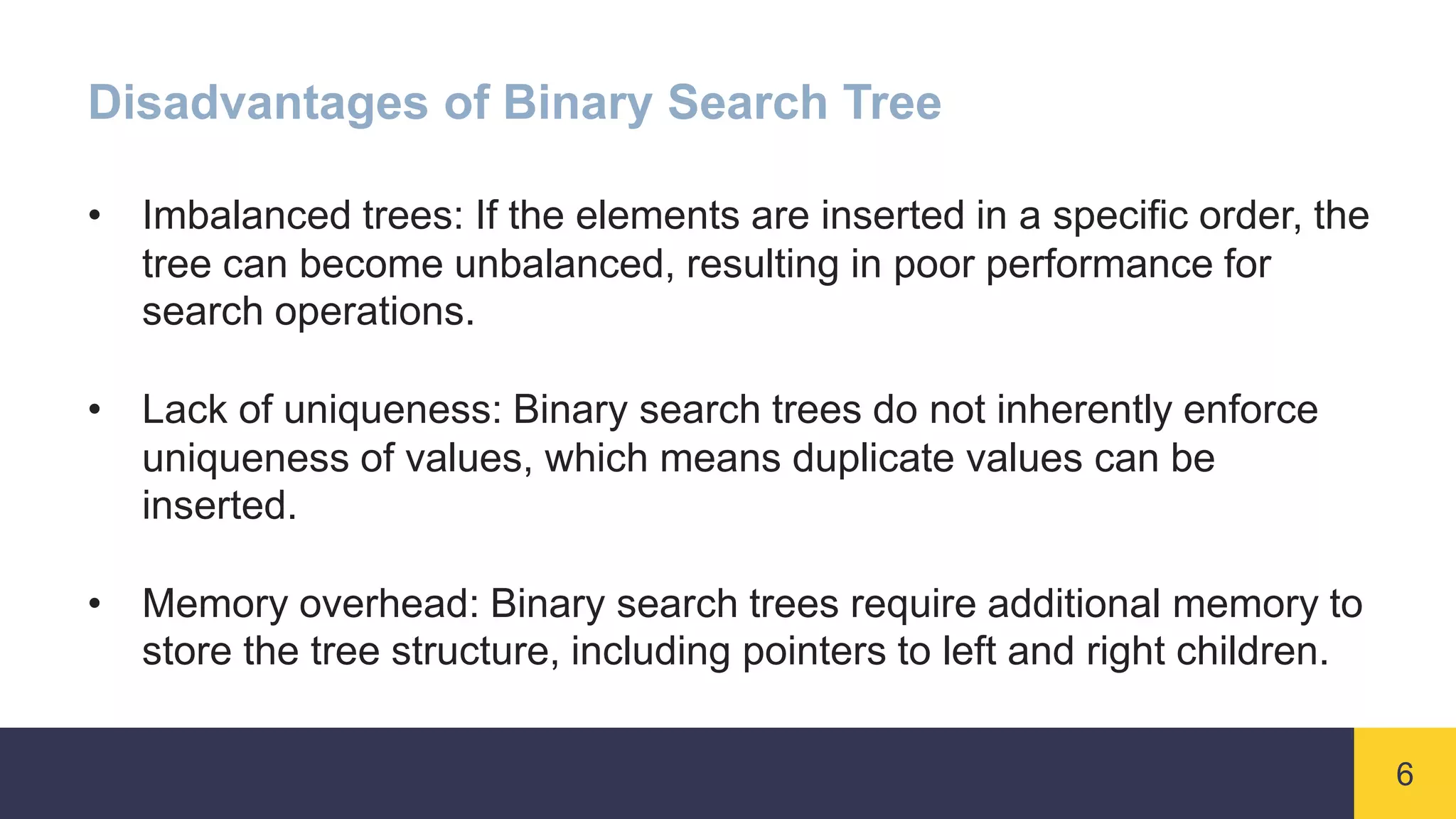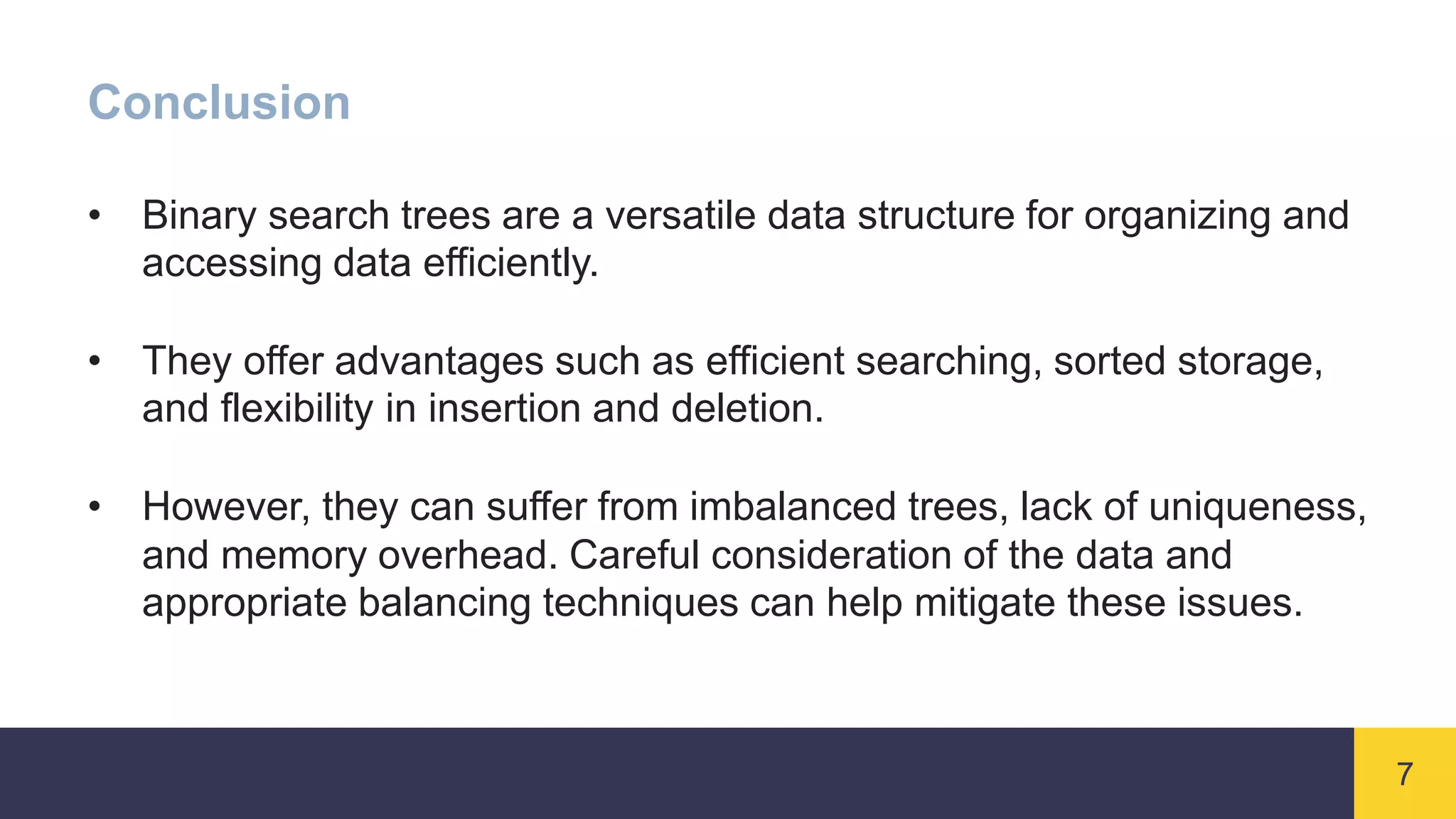Binary search trees organize data hierarchically, with each node having at most two children. The left child contains a value smaller than the parent and the right child contains a larger value. Searching is efficient as half of remaining nodes can be eliminated at each step by comparing the search value to the current node. Traversals such as inorder give elements in sorted order. Insertion and deletion are flexible but trees can become imbalanced affecting performance.

